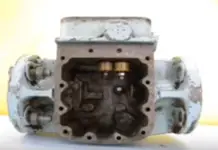Classification of HVDC system:
The high voltage direct current transmission can be classified into three different types such as monopolar link, bipolar link and homopolar link. Let see.
Monopolar Link:
The only one conductor used in this type of HVDC transmission system. The most negative terminal is preferred to transfer to reduce the corona effect and the ground will be taken as the current return path. But sometimes a metallic return path also considers. The earthing of poles is done by earth electrodes located about 15 to 55 km away from the respective terminal station. However, the earth terminal cannot be a perfect return path for the loads, since the monopolar link is not used in the present days.
Bipolar DC Link:
It has two parallel conductors, operates at one positive polarity and the other operates at negative polarity. Each terminal has sets of converters of identical ratings in series in DC lines which is used to convert AC to DC. The midpoints of converters station are earthen via the electrode. The voltage between the conductors is equal to two times the voltage between either of the conductors and earth.
The voltage of the earthed electrodes is just half the voltage of the conductor used for transmission the HVDC. A bipolar HVDC system is described as a say ± 500 kV/ ± 400 kV/± 600 kV, etc. A bipolar system is advantageous over monopolar is that when any fault occurs in one pole, the system may be changed to monopolar mode with a ground return path.
Thus, the other pole continues to supply A.C voltage with half the rated power through the ground return. This is the main advantage of the bipolar link. During Normal Condition the poles are operated at the same flow of current hence the current flow through the ground is zero.
Bipolar HVDC links in India:
Rihand-Delhi HVDC transmission system is the first longest DC transmission line in Asia as well as India. The voltage rating of ±400kV, Bipolar link and the distance about 810 KM. the converter is located at Varanasi and the inverter station is located at Dadri. The Maximum capacity of that line is 1500MW.
Talcher-Kolar Bipolar Link:
It is quite larger than Rihand-Delhi HVDC transmission lines. The link is operated at ±500 kV, length about 1400kMs and has to carry capacity of 2000MW. This is the world largest DC Transmission Lines.
HomoPolar Link:
It is an updated version of the monopolar link. A homopolar link has two conductors which have a negative polarity and the current return will be taken as a metallic wire or ground. Failure on one conductor and other conductor operates as a monopolar link. The most negative polarity is preferred to reduce transmission losses.









